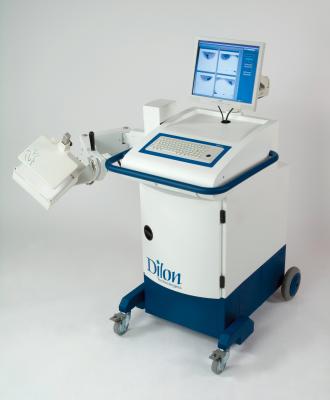
Molecular Breast Imaging (MBI), also known as Breast-Specific Gamma Imaging (BSGI), is a procedure that is able to detect breast cancers missed by mammography and ultrasound, particularly in women with dense breasts. The MBI procedure is now available in hundreds of breast centers nationwide and is commonly utilized as a tool along with mammography and ultrasound to help in the diagnosis of breast cancer. Although the radiation dose associated with this procedure is already low enough to be used in select cases, new research is being conducted to find ways to reduce the dose further so that MBI may be used in annual breast cancer screening for high-risk women with dense breast tissue. The latest results from this research were presented at the Chicago International Breast Course in October by Marcela Bohm-Velez, M.D., the principal investigator of an ongoing trial at Weinstein Imaging Associates in Pittsburgh, Pa.
In the MBI procedure, the patient receives a pharmaceutical tracer. Reducing the amount of tracer needed for imaging reduces the radiation dose to the patient. According to the results obtained by Bohm-Velez and her co-authors, MBI can be conducted using about one half the amount of tracer typically used today, thereby exposing the patient to a much lower radiation dose. In their prospective trial, 72 patients had low-dose MBI followed by imaging at the standard dose and their results indicate that low-dose MBI provided the same diagnostic yield as the images conducted at the standard dose. "The pioneering research done at the Mayo Clinic indicated low-dose is an option for the dual-head MBI system and our research indicates that it is an option for the single-head MBI systems as well. We have found that it is possible to cut the dose in half and still produce diagnostically useful images," said Bohm-Velez. "In our previous work, we found that MBI had a higher sensitivity for breast cancer than mammography or ultrasound and this work is a natural extension. The uptake of the tracer in the breast tissue is complex and highly variable, and our goal is to help the medical community develop strategies for obtaining the best images possible. We have made several observations regarding the rate of tracer washout from the breast tissue and the impact of patient's weight on tracer uptake. We are currently working to submit our results for peer-reviewed publication this fall."
For mor information: www.molecularbreastimaging.com


 December 16, 2025
December 16, 2025 








